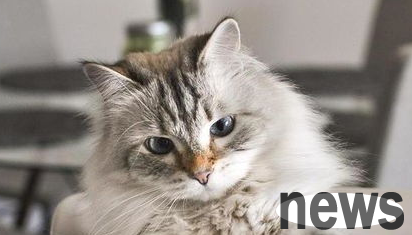Popular science on diagnosis and treatment of cat arthritis, a must-see for raising cats! Arthropathy is a chronic disease. It may not care so much for the owner in the early stage. Occasional dislike of exercise or abnormal walking postures are oft...
Popular science on diagnosis and treatment of cat arthritis, a must-see for raising cats! Arthropathy is a chronic disease. It may not care so much for the owner in the early stage. Occasional dislike of exercise or abnormal walking postures are often ignored. However, if it is really an abnormality caused by arthritis, it may not be so easy to treat when it is truly noticed. Of course, joints will not only affect the cat's walking posture, but may also cause a series of functional disorders.

Some people think that the probability of joint disease in cats is extremely small and generally does not occur. In fact, this statement is one-sided. For young cats, they may not be troubled by joint disease. However, scientific research has found that 30% of cats over eight years old are enduring the pain caused by arthritis, so sometimes the limp of elderly cats cannot be taken for granted. Although aging has many manifestations of the body, if you really want to consider the cat's body, it is better to have a check-up.
There is no doubt that there are many causes of joint diseases, such as nutritional metabolism, or inflammation caused by trauma, etc., and the degree of joint diseases caused by different causes is different. Some are just lameness, and some may become paralyzed. Take cats’ degenerative arthropathy as an example. This is a relatively mild arthropathy. Although the probability of it being produced in cats is small, it should not be taken lightly.
1. Symptoms
Stage or persistent claudication, reluctance to move. Limpness improves during activity; limpness worsens after strenuous activities, especially during a period of rest. As the condition progresses, the frequency and severity of pain and lameness increase. The joints are inflexible, there is pain during exercise and palpation, and the joints are swelling.
2. Diagnosis
is usually based on medical history, clinical examination results and characteristic X-ray signs. During clinical examination, pain in the diseased joint, reduced range of joint motion, crimping and (possible) joint swelling can be found during clinical examination. The key to identifying cats’ pain is to check changes in their lifestyle, which are often caused by movement problems, which may include unwillingness to jump or inability to jump as high as before, and a decrease in the cat’s overall activity level, such as more sleepy and less playing.

3. Treatment
(1) Restrictive activities or interval activities can control clinical symptoms.
(2) Drug treatment is used to alleviate clinical symptoms:
①Aspirin, 10-25 mg/kg, orally, 2-3 times a day;
②Chlorocarbazolepropionic acid, 2.2 mg/kg, orally, 2-3 times a day; baotaisone, 13 mg/kg, orally, 2-3 times a day, up to 800 mg per day, not used in cats;
③Corticosteroids such as prednisone, 1-2 mg/kg, orally, 2-3 times a day, gradually reducing to 0.25 mg/kg. While applying the above drugs, samitidine, 5-10 mg/kg, orally, 3 times a day to prevent gastric ulcers.
(3) Surgical treatment: Arthroplasty or joint formation can effectively reduce pain and restore limb function.
In addition, some unique methods can be used for the treatment of cat arthritis, such as hydrotherapy. In California, USA, a 14-year-old domestic cat named Morph suffered from arthritis. His owner, Jo Scott, sent him to a spa on the south coast of California. The principle of the hydrotherapy is not complicated. The buoyancy of the water can relieve the pressure of muscles and bones, allowing the limbs of small animals to move freely in the water without being affected by pressure. This can exercise the flexibility of the limbs and promote blood circulation in the body, which has a therapeutic and preventive effect on inflammation. At the beginning, Morph was as afraid of water as other cats, but after careful care from the staff, Morph enjoyed the warm water temperature here and loved intimate contact with people.